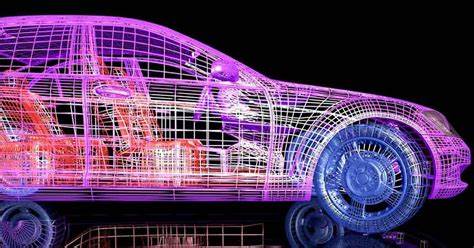Auto engineering technology has ushered in a new era of transportation, revolutionizing the way vehicles are designed, manufactured, and operated. From electric powertrains to advanced driver assistance systems, technology has become the driving force behind innovation in the automotive industry. This article delves into the world of auto engineering technology, highlighting key advancements and their impact on the future of mobility.
Electric Powertrains Electrifying the Road Ahead
Contents
- 1 Electric Powertrains Electrifying the Road Ahead
- 2 Electric Vehicles (EVs)
- 3 Hybrid Vehicles
- 4 Autonomous Driving: Paving the Way for Self-Driving Vehicles
- 5 Advanced Driver Assistance Systems (ADAS)
- 6 Sensor Fusion and AI
- 7 Connected Cars The Internet of Things on Wheels
- 8 V2X Communication
- 9 Entertainment and Convenience
- 10 Lightweight Materials and Sustainable Manufacturing
- 11 Advanced Materials
- 12 3D Printing and Additive Manufacturing
- 13 Future Challenges and Opportunities
- 14 Cybersecurity
- 15 Infrastructure and Regulation
One of the most transformative changes in auto engineering is the shift towards electric powertrains.
Electric Vehicles (EVs)
Electric vehicles have gained popularity due to their environmental benefits and reduced reliance on fossil fuels. Auto engineers are developing more efficient battery technologies, longer ranges, and faster charging infrastructure.
Hybrid Vehicles
Hybrid vehicles combine internal combustion engines with electric motors, optimizing fuel efficiency and reducing emissions.
Autonomous Driving: Paving the Way for Self-Driving Vehicles
Auto engineering technology has propelled us closer to the reality of self-driving vehicles.
Advanced Driver Assistance Systems (ADAS)
ADAS technologies such as adaptive cruise control, lane departure warnings, and automatic emergency braking are the building blocks of autonomous driving.
Sensor Fusion and AI
Autonomous vehicles rely on a combination of sensors like LiDAR, radar, and cameras, coupled with artificial intelligence, to navigate and make real-time decisions.
Connected Cars The Internet of Things on Wheels
The integration of connectivity and auto engineering technology is transforming vehicles into smart, connected devices.
V2X Communication
Vehicle-to-Everything (V2X) communication enables vehicles to communicate with each other and with infrastructure, enhancing safety and traffic efficiency.
Entertainment and Convenience
Connected cars offer infotainment systems, real-time navigation, and remote vehicle monitoring through smartphone apps.
Lightweight Materials and Sustainable Manufacturing
Auto engineers are turning to innovative materials and manufacturing processes to reduce vehicle weight and environmental impact.
Advanced Materials
Materials like carbon fiber and aluminum are being used to reduce weight while maintaining structural integrity.
3D Printing and Additive Manufacturing
Additive manufacturing allows for complex and customizable parts to be produced with reduced waste.
Future Challenges and Opportunities
While auto engineering technology brings numerous benefits, it also presents challenges.
Cybersecurity
Connected vehicles are vulnerable to cyberattacks, making robust cybersecurity measures a critical concern.
Infrastructure and Regulation
The adoption of electric vehicles and autonomous driving depends on supportive infrastructure and clear regulatory frameworks.
Auto engineering technology has transformed vehicles from mere modes of transportation into sophisticated, interconnected, and sustainable systems. From electric powertrains to autonomous driving capabilities, the advancements in this field are shaping the future of mobility. As auto engineers continue to push boundaries, the automotive industry is poised for a revolution that promises safer, more efficient, and environmentally conscious transportation options for generations to come.



